Impact of size on range and cost of the UAV
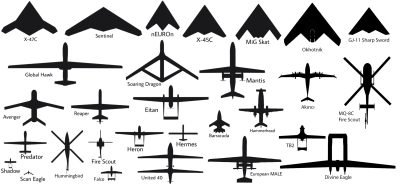
Importance of Size in UAV Design
The size of a UAV, particularly a quadcopter, plays a crucial role in its overall design and functionality. Size impacts several key factors, including payload capacity, flight duration, range, and operational efficiency. Larger UAVs can carry more equipment and achieve longer flight times, but they often come with increased costs and require more power. Conversely, smaller UAVs are more agile and cost-effective but may have limitations in terms of payload and range. Understanding the balance between size and performance is essential for optimizing UAV design to meet specific operational needs while managing cost and efficiency.
Classification of UAVs in India
- Micro UAVs: UAVs with a maximum takeoff weight (MTOW) of less than 250 grams. These are typically used for recreational purposes and small-scale applications.
- Mini UAVs: UAVs with an MTOW ranging from 250 grams to 2 kilograms. They are often used for low-altitude applications such as aerial photography and surveillance.
- Small UAVs: UAVs with an MTOW between 2 kilograms and 25 kilograms. These UAVs are used in various professional and commercial applications, including agriculture, infrastructure inspection, and mapping.
- Medium UAVs: UAVs with an MTOW between 25 kilograms and 150 kilograms. These are used for more specialized applications, including long-range surveillance and larger-scale surveys.
- Large UAVs: UAVs with an MTOW exceeding 150 kilograms. These are typically used for military and high-end commercial applications, such as large-scale delivery systems and heavy-lift operations.
Effect of Size and Weight on Drone Parameters
- Aerodynamics
- Size: Larger drones generally have a higher drag coefficient due to their increased surface area, which can reduce aerodynamic efficiency.
- Weight: Heavier drones require more lift to stay airborne, which can increase drag. However, a well-designed heavier drone can have better stability in windy conditions.
- Endurance
- Size: Larger drones can accommodate bigger batteries or fuel tanks, potentially increasing endurance. However, increased drag from a larger surface area can offset some of these gains.
- Weight: Heavier drones consume more energy to maintain flight, reducing endurance. Conversely, if the weight includes additional battery capacity, it can extend endurance.
- Altitude
- Size: Larger drones can often reach higher altitudes due to more powerful propulsion systems. However, increased drag at higher altitudes can be a limiting factor.
- Weight: Heavier drones might struggle to reach higher altitudes as they require more lift, which can be harder to generate in thinner air at higher altitudes.
- Speed
- Size: Larger drones may have a higher top speed due to more powerful motors. However, increased drag from a larger surface area can reduce efficiency and speed.
- Weight: Heavier drones need more thrust to achieve and maintain higher speeds, which can strain the propulsion system and reduce battery life.
- Stability and Control
- Size: Larger drones can be more stable in flight due to a wider stance and larger control surfaces, making them better suited for high-precision tasks.
- Weight: Heavier drones generally have better inertia, providing more stable flight in turbulent conditions but requiring more powerful control systems to maneuver.
- Payload Capacity
- Size: Larger drones typically have a higher payload capacity, allowing them to carry more or heavier equipment.
- Weight: Heavier drones can often carry more payload relative to their own weight, but this further increases the total weight, affecting other parameters like endurance and speed.
- Energy Efficiency
- Size: Larger drones may have lower energy efficiency due to increased drag and power requirements for propulsion and lift.
- Weight: Heavier drones require more energy to stay airborne, decreasing overall efficiency. However, efficient weight distribution and aerodynamics can mitigate some losses.
- Cost
- Size: Larger drones are generally more expensive due to the increased material costs and more powerful components required.
- Weight: Heavier drones also tend to be more costly, reflecting the need for stronger structural components and more robust propulsion systems.
Smallest drone
HGLRC Petrel65 Indoor Whoop 1S
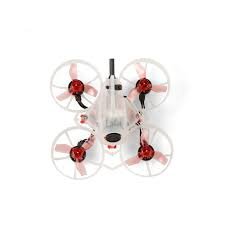
- Size: Approximately 65 mm
- Weight: Around 35 grams.
- Controls: Basic control functions suitable for indoor flying.
- Maneuvers: Capable of performing flips and basic maneuvers, offering a fun flying experience.
- Flight Time: Around 4-8 minutes on a single charge.
- Range: 200 m
Price – ₹11,000
Biggest Drone
EHang 216 (Electric)
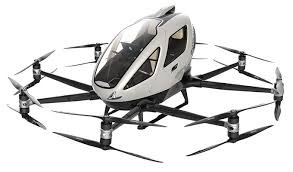
- Width: 6 meters (18.4 feet)
- Height: 7 meters (5.6 feet)
- Rotor Diameter: Approximately 6 meters (5.2 feet) per rotor
- Empty Weight: Approximately 360 kilograms (794 pounds)
- Maximum Takeoff Weight: Around 600 kilograms (1,322 pounds)
- Passenger Capacity: Designed to carry up to two passengers with a combined weight limit.
- Flight Time: Capable of flying for about 21 minutes on a single charge, depending on payload and flight conditions.
- Range: Approximately 35 kilometers (22 miles) with a full battery.
- Speed: Maximum speed of around 130 kilometers per hour (81 mph).
- Power Source: Powered by 16 electric motors, each driving one of the eight pairs of rotors.
- Autonomous Operation: Fully autonomous, with the capability to follow pre-programmed routes and navigate using onboard sensors and GPS.
- Safety Features: Multiple redundancies in power, navigation, and communication systems. It also includes a fail-safe system for safe landing in case of emergencies.
- Applications: Primarily designed for urban air mobility, including passenger transport, emergency medical services, and logistics.
Price – ₹2.5 to ₹3.6 crores
General Atomics MQ-9 Reaper (Gasoline)
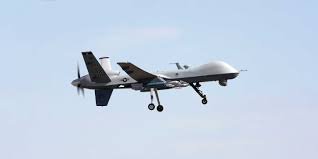
- Primary Users: United States Air Force, Royal Air Force, Italian Air Force, others
- Length: 11 meters
- Wingspan: 20 meters
- Height: 81 meters
- Max Takeoff Weight: 4,760 kg
- Powerplant: Honeywell TPE331-10 turboprop engine
- Power Output: 900 horsepower (671 kW)
- Range: 1,850 km with full fuel and typical payload
- Endurance: Up to 27 hours
- Service Ceiling: 15,240 meters
- Payload: 1700kg
Price: ₹140 crores
Highest Endurance Drones
Raefly VT260 (Electric)
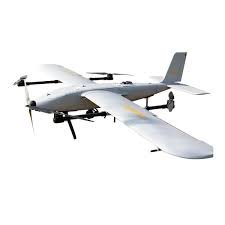
- Type: Fixed wing eVTOL UAV
- Wingspan: 2 meters
- Length: 8 meters
- Max Take-off Weight: 5 kg
- Empty Weight: 5 kg
- Payload Capacity: Up to 3 kg
- Up to 3 hours (pure electric configuration)
- Range: Up to 100 km
Price – ₹17 lakhs
UAVOS Saker MALE (Gasoline)
- Length: 3 meters
- Wingspan: 19 meters
- Height: 3 meters
- Max Take-off Weight: 1,100 kg
- Payload Capacity: Up to 200 kg
- Fuel Capacity: 280 liters
- Endurance: Up to 24 hours
- Range: 2,600 km
Price – ₹6 crores
Conclusion
In this report, we examined the impact of UAV size on range and cost by analyzing a diverse range of UAVs across different categories, including Nano and Micro drones. The objective was to understand how variations in UAV size (measured by Maximum Takeoff Weight or MTOW) correlate with their range and cost.
Approach and Methodology
- Data Collection: A comprehensive dataset was compiled, featuring various UAV models along with their specifications, including MTOW Weight, Range, and Price. The dataset encompassed drones from prominent manufacturers such as DJI, Hubsan, Parrot, and others, representing a broad spectrum of capabilities and applications.
- Data Organization: The data was systematically organized into Excel, with separate columns for each relevant parameter: MTOW Weight (g), Range (km), and Price (INR). This organization facilitated a clear comparison and analysis of how each parameter affects the others.
- Chart Creation: A scatter plot was created using Excel to visually represent the relationship between MTOW Weight and both Range and Price. The MTOW Weight was plotted on the X-axis, while Range and Price were represented on separate Y-axes (with Price using a secondary Y-axis).
- Trend Observations: UAVs with higher MTOW Weight often had better range capabilities and were more expensive. For instance, larger Micro drones like the DJI Phantom 4 Pro and Yuneec Typhoon H Plus exhibited longer ranges and higher prices compared to smaller Nano drones.
- Scatter Plot Analysis: The scatter plot visually demonstrated a trend where increases in MTOW Weight were generally associated with increases in both Range and Price. This was expected, as larger UAVs typically offer higher endurance and greater payload capacity but at a higher cost.
Conclusions Drawn
- Size and Range Correlation: The analysis confirmed that there is a positive correlation between UAV size (MTOW Weight) and its range. Larger UAVs are generally equipped with more powerful batteries or fuel systems, enabling them to cover longer distances. This aligns with the observed data where high-end models demonstrated superior endurance compared to smaller, lighter drones.
- Size and Cost Relationship: The report also validated the trend that increased UAV size leads to higher costs. Larger UAVs with advanced features, higher payload capacities, and longer ranges are priced significantly higher. This is due to the increased manufacturing costs, advanced technology, and higher operational capabilities that come with larger UAVs.
- Implications for UAV Selection: For stakeholders selecting UAVs, the findings suggest that choosing the appropriate UAV should involve a trade-off between the desired range, payload capacity, and budget. Smaller drones might be more cost-effective for short-range applications, while larger UAVs are more suitable for missions requiring extended ranges and higher payload capacities, albeit at a higher cost.
Recommendations:
- For Budget-Conscious Buyers: Opt for smaller UAVs if the primary requirement is limited range and lower costs.
- For Long-Range Missions: Invest in larger UAVs if extended range and high payload capacity are critical, with an understanding of the higher financial investment required.
Report by Yash Bajaj
For Whoopmasters India








